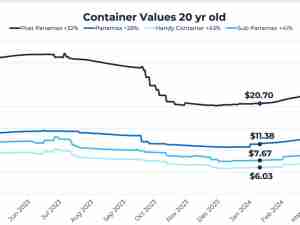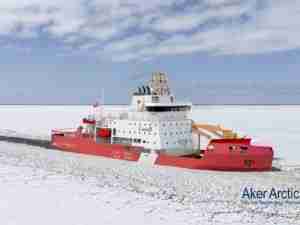Container xChange, an online container logistics company, published its March container market forecaster today. While most industry participants foresee container prices reviving in the coming months, we see the Container Price Sentiment Index (xCPSI) recording a positive value by the beginning of March 2023.
Historically, around 2700+ industry professionals have participated in the sentiment analysis surveys since February where Container xChange asked for their expectations on container price development in the coming times.
These repeated surveys form a crucial element of the Container price sentiment index (xCPSI) which indicates how shipping professionals worldwide are viewing container prices to develop in the coming times. The positive trend that we see since the last three recordings indicates that the industry expects container prices to improve soon, thereby reviving confidence.

Excess Containers Causing Depots to Run on 90% Utilization
“We learn from many customers of Container xChange that the demand for containers is still there, just that the supply is overshooting the demand. Due to this, we see ripple impacts like for example, depots working on max capacity (Depots in China for instance working on 90% utilization) and therefore, not being able to accept new clients. This is a global phenomenon now. And that is a struggle for the NVOCCs and shipping lines who want to open new markets.” inferred Christian Roeloffs, cofounder and CEO of Container xChange.
Container xChange provides a marketplace, an operating infrastructure, and a layer of services like payments to container logistics companies globally.
Oversupply of containers has caused depots to run on almost 90% utilisation in countries like China which makes it difficult for depots to move the containers around and eventually makes depots less efficient. To put context, depots earn on handlings (gate movements) and not so much on storage. So, this development is also more painful for them in terms of contribution to operational inefficiencies than a contribution to revenue.
Commenting on the state of depots currently, Agnieszka Polejewska, Container Depot Department Coordinator, Langowski Logistics company based in Poland shares with Container xChange, “For inland containers, we do not see many containers on the yards. The production of new containers and their expanse on the ports in Europe and the USA can be overwhelming, as there are still a lot of old containers. But the production was, is and will be still working, as old, heavily used containers must be replaced. We must wait it out till the end of the Q1 of 2023 to see how this situation is developing because of so many disruptions in our industry.”
Shipping Lines and Leasing Companies Holding Inventory
We have also observed that the leasing companies and shipping lines are holding their containers longer than they would normally. They are deploying a wait-and-watch strategy hoping that prices will stabilize. Sell-offs are also not happening yet because the leasing and shipping companies have a free storage agreement with the depots. So, they don’t feel the storage fee pain and hence, wait and see until the prices stabilise.
We do think that container selloffs will intensify into the Q2 or the second part of this year because depots will run out of space, prices will continue to erode, and shipping lines and leasing companies will need to sell off some of that stock so the volume of second containers and trading will increase in future and will further drive down the cost.
Friendshoring is Happening
As geopolitical risks intensify, global economies are working towards diversifying their production, manufacturing, and container sourcing. The forecaster affirms that according to industry research, friend shoring is happening.
On the topic of diversification of trade lanes, Christian Roeloffs, cofounder and CEO, of Container xChange comments, “The process of diversification has already started. Since this is a long-drawn process, we are yet to see visible signs of this in the trade patterns. But we see an uptick in intra-Asia trade. In the future, the larger trades will suffer a demand decrease so capacity needs to be adjusted towards regions with more sticky demand and more stable rate levels. Supply chains will need to be more resilient in the coming years. These relocation strategies will effectively reduce reliance on one production and supply chain hub to a more diverse, smaller trading pattern.”
“For logistics stakeholders, there are more fragmented value chains to be dealt with, more growth to be discovered worldwide, and ultimately, we expect a broader base for business. This could be unleashed by the right set of data and insights to create a better ecosystem for companies.”









